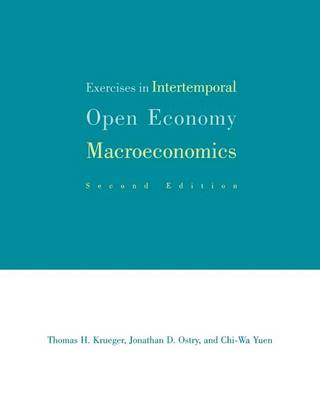The MIT Press
3 total works
One of the most important forces driving economic performance in the United States and other countries during the 1990s was the rise of information technology. The new technology has had such a significant impact on the economy that "the new economy" emerged as a popular term in both the media and academia.
This book, written in an accessible style, examines basic questions about the effects of information technology on various aspects of the economy. The topics include the relationship between innovation and the stock market value of the innovating firm; competition policy; demand factors as determinants of growth; institutional aspects of the innovation process; and the effectiveness of monetary policy in stabilizing the economy.
This book, written in an accessible style, examines basic questions about the effects of information technology on various aspects of the economy. The topics include the relationship between innovation and the stock market value of the innovating firm; competition policy; demand factors as determinants of growth; institutional aspects of the innovation process; and the effectiveness of monetary policy in stabilizing the economy.
Exercises in Intertemporal Open-Economy Macroeconomics
by Thomas H. Krueger, Jonathan D Ostry, and Chi-Wa Yuen
Published 7 July 1993
This exercise manual has been revised to be a companion volume to the third edition of "Fiscal Policies and the World Economy" by Jacob Frenkel and Assaf Razin. It includes new material on endogenous growth, convergence, and an extension of the Mundell-Flemming model.
Taming the Tide of Capital Flows
by Atish R. Ghosh, Jonathan D Ostry, and Mahvash S. Qureshi
Published 15 December 2017
While always episodic in nature, capital flows to emerging market economies have been especially volatile since the global financial crisis. After peaking at $680 billion in 2007, flows to emerging markets turned negative at the onset of crisis in 2008, then rebounded only to recede again during the U.S. sovereign debt downgrade in 2011. Since then, flows have continued to swing wildly, leaving emerging market policy makers wondering whether they can put in place policies during the inflow phase that will soften the blow when flows subsequently recede. This book offers the first comprehensive treatment of policy measures intended to help emerging markets contend with large and volatile capital flows. The authors, all IMF experts, explain that, in the spirit of liberalization and deregulation in the 1980s and 1990s, many emerging market governments eliminated capital inflow controls along with outflow controls. By 2012, however, capital inflow controls were again acknowledged as legitimate policy tools. Focusing on the macroeconomic and financial-stability risks associated with capital flows, the authors combine theoretical and empirical analysis to consider the interaction between monetary, exchange rate, macroprudential, and capital control policies to mitigate these risks. They examine the effectiveness of various policy tools, discuss the practical considerations and multilateral implications of their use, and provide concrete policy advice for dealing with capital inflows.

